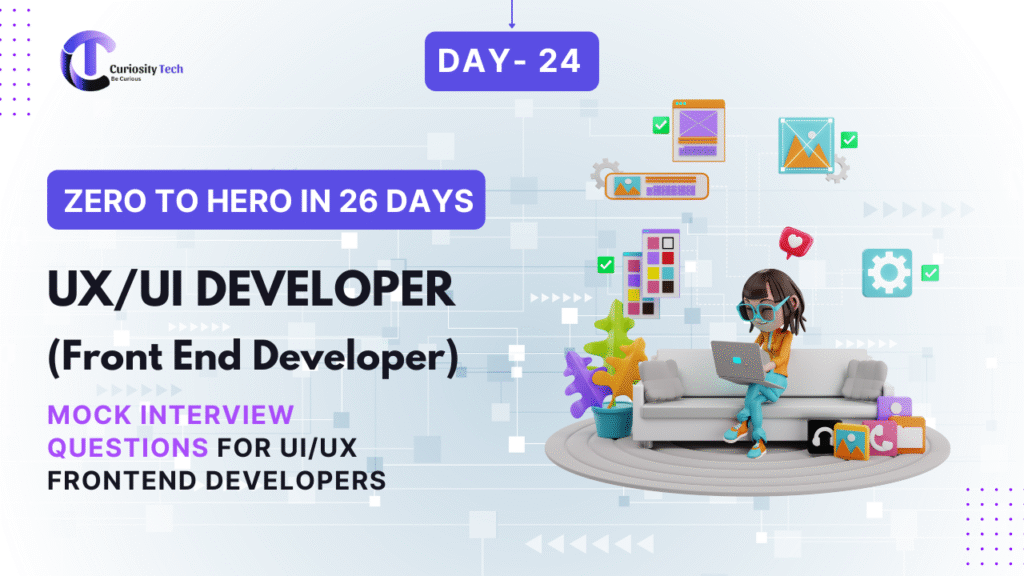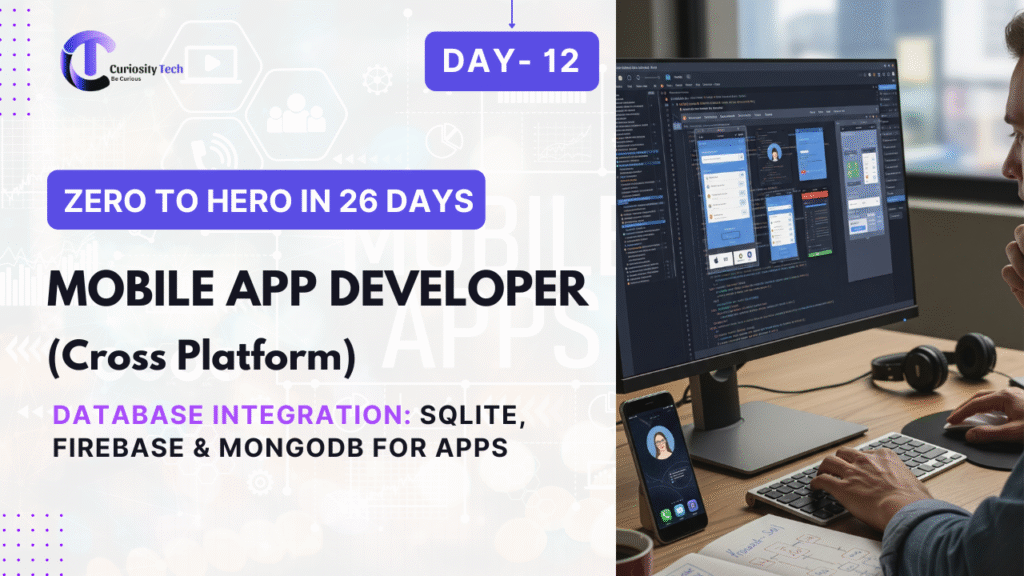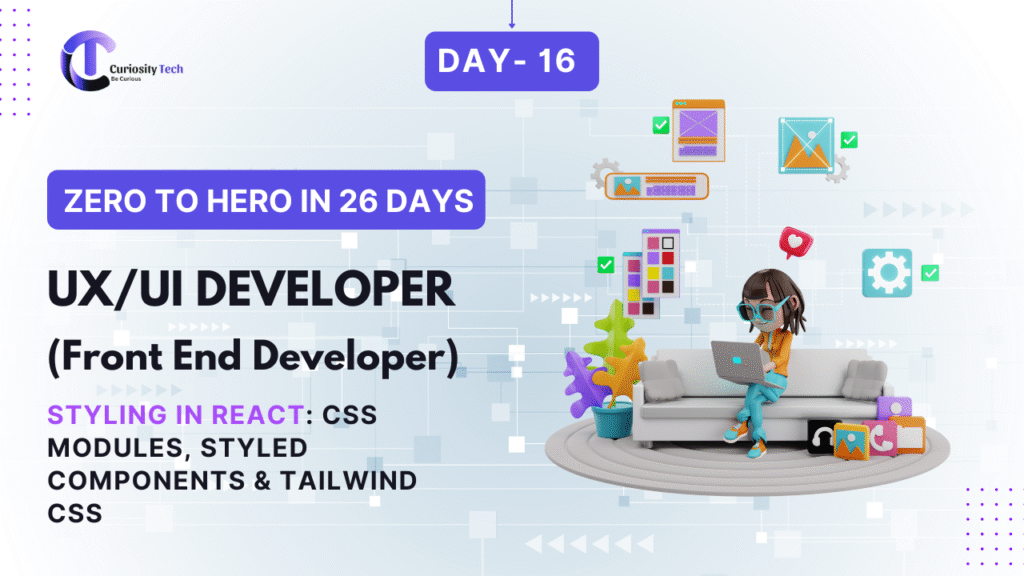Introduction
As the field of UI/UX and frontend development grows rapidly, preparing for interviews is no longer just about knowing HTML, CSS, and JavaScript. Companies today look for developers who can merge technical skills with a strong design sense, user empathy, and problem-solving capabilities. To excel, you need to anticipate the questions, practice answers, and showcase your portfolio effectively.
At CuriosityTech.in, we’ve guided hundreds of aspiring UI/UX developers in refining their skills and acing interviews, focusing on real-world scenarios rather than textbook questions.
1. Technical Questions – Test Your Core Knowledge
Interviewers often start with foundational questions to test your proficiency in front-end technologies and UX principles.
| Question | Purpose | Hints for Answering |
| Explain the difference between relative, absolute, and fixed positioning in CSS. | Assess CSS knowledge and layout understanding | Use practical examples like header positioning vs. modal pop-ups |
| What is the difference between UX and UI design? | Evaluate design thinking | UX focuses on usability; UI focuses on visual interface |
| How would you optimize a website’s loading speed? | Test performance optimization skills | Mention image compression, lazy loading, code splitting, and caching |
| What is a CSS Grid vs Flexbox? | Check layout techniques | Explain when to use grid for 2D layout and flexbox for 1D alignment |
| How do you handle browser compatibility issues? | Check problem-solving skills | Mention feature detection, polyfills, and testing across browsers |
💡 Pro Tip: When answering technical questions, always relate them to projects you’ve worked on, showing tangible impact.
2. Behavioral Questions – Show Your Thought Process
Employers look for developers who can collaborate, iterate, and think critically.
- “Describe a time you disagreed with a designer or developer on your team. How did you resolve it?”
Explain your approach, focusing on empathy, data-driven arguments, and compromise. - “Tell us about a project where the UX was failing. How did you improve it?”
Highlight your analysis: user research, A/B testing, or iterative wireframing. - “How do you stay updated with UI/UX trends?”
Mention online courses, following industry leaders, and platforms like CuriosityTech.in, which offer hands-on UI/UX tutorials and resources.
3. Portfolio & Case Study Questions – Your Work Speaks
Many interviews will dive deep into your portfolio. Be prepared to explain:
- Your design process, from wireframe to prototype.
- Tools you use: Figma, Adobe XD, Sketch, VS Code.
- How your design impacts user behavior, conversions, or accessibility.
Example: “At CuriosityTech.in, our interns work on live projects where they redesign landing pages. During interviews, candidates can confidently discuss A/B test results and user feedback integration.”
4. Practical/Whiteboard Challenges
Some companies prefer live coding or wireframing exercises:
- Build a responsive navbar using HTML, CSS, and minimal JavaScript.
- Create a low-fidelity wireframe for a mobile app feature.
- Suggest UX improvements for a given webpage.
Infographic Idea: A step-by-step flowchart showing the process: Problem Understanding → Wireframe → Prototype → Feedback → Iteration → Final Design.
5. Hierarchical Table – Skill Readiness for Mock Interviews
| Skill Area | Proficiency Level | Interview Focus |
| HTML & CSS | High | Layouts, semantic tags, responsiveness |
| JavaScript & DOM | Medium-High | Event handling, dynamic UI updates |
| UI Design Principles | High | Typography, color theory, grid systems |
| UX Research | Medium | User flows, usability testing |
| Version Control (Git) | Medium | Collaboration workflow |
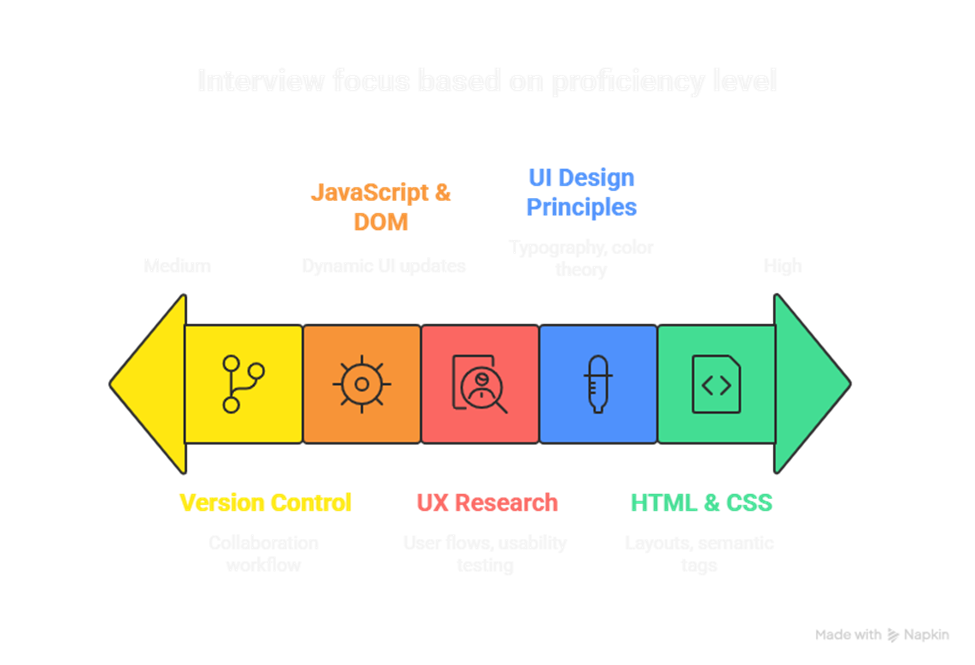
💡 Tip: Review each area and prepare examples from your portfolio.
6. Conclusion
Mock interviews are more than rehearsing answers—they are opportunities to reflect on your skills, identify gaps, and showcase your creativity. Combining technical knowledge, UX empathy, and communication skills makes a candidate stand out.
Platforms like CuriosityTech.in offer mentorship, real-world projects, and interactive sessions for frontend developers, ensuring you’re not just interview-ready but career-ready. By practicing with real questions and simulating live interviews, you’ll gain the confidence to excel in any UI/UX frontend role.

